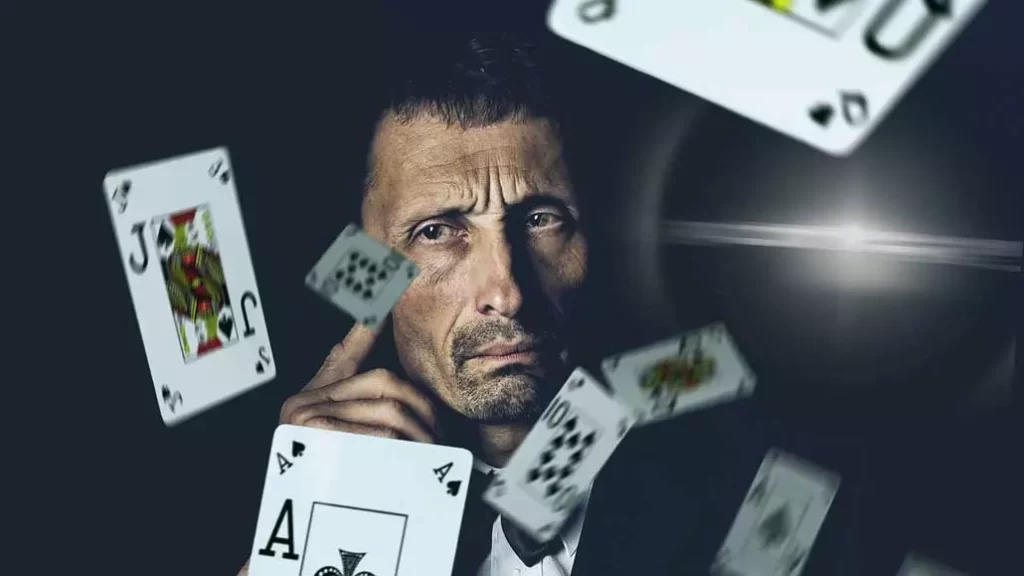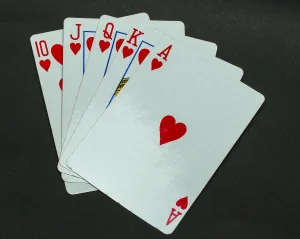The Thrill of Bluffing – Card Games That Test Your Poker Face

Successful bluffs require both strategy and psychology; it’s crucial that your opponents perceive you, as well as understanding their betting patterns in relation to this current hand.

Bluffers must consider their opponent’s likely holdings and make quick decisions under pressure, all the while managing their emotions while projecting confidence.
1. Four-card draw
Four-card draw is one of the easiest casino poker games to pick up and learn, yet one of the toughest to master. Each player’s 5-card hand remains hidden until only partially displayed; thus requiring them to learn how to assess its strength as quickly as possible.
Each player makes an ante and Aces Up bet (an amount equal to one to three times their initial ante), followed by dealing of five cards to them from a dealer. Players may then place either a Play bet (in which they bet their hand will beat that of the dealer), or fold.
Players making a pair of aces or better in their Play wager are awarded an Automatic Bonus according to the pay table, in addition to their Ante and Play bets, even if the dealer holds a higher hand than they do – making this version of poker even more thrilling than traditional casino poker!
2. Texas hold’em
Texas hold’em is the world’s most beloved community card game. Like its counterparts, Texas hold’em involves betting rounds and employs the same basic hand ranking system (high card, pairs, three of a kind, four of a kind, straights, flushes and full houses).
The dealer shuffles a standard 52-card deck, moving it clockwise around the table after each hand played. As soon as this disc has been placed back onto its position, one or more players place blind bets (small and large blind) before beginning each betting round.
After the initial betting round is completed, players are given two cards face down known as their hole cards – these will then form part of their hole hand for subsequent rounds – the preflop, flop, turn and river betting rounds – before finally crowning a victor. Whoever holds the highest hand from both their hole card (known as their hole hand) as well as any community cards will win!
This hand usually comprises of a high-value full hand, though you could also win with two pair or better or by making a semi-bluff. If your total nothing hand is still intact on the river, bet enough so other players fold.
3. Omaha
Omaha is an action-packed card game filled with high-level strategy. To be successful at Omaha requires significant practice, and players often assess opponents by reading their body language.
Players in Omaha start each hand with four hole cards – unlike in Texas Hold’em where two are provided – which they can combine with three community cards on the flop, turn, and river to form a poker hand.
Maintaining an inconspicuous poker face is key for this game, since any movement or expression could provide your opponent with valuable intel. For instance, many poker players tend to shake their hands when they have won hands which could easily tip off other players of what’s happening.
A good poker player must also be mindful of their own tells, such as a rapid heartbeat or excessive sweating, that could tip off their opponent before the flop is even played out. Therefore, it is essential that their poker faces remain as innocuous as possible to protect their future success at poker.
4. Seven-card stud
Stud poker requires two cards dealt face down and one face-up on “third street.” From here, players must decide whether or not they want to continue with their hand depending on their own hand and any potential opponents who may also hold similar ones.
Seven-card stud rules differ greatly from Omaha and Texas Hold’em in that there is no fixed table position and each betting round determines who acts first; typically the player with the lowest upcard makes the bring-in bet before acting on subsequent betting rounds.
Even with these differences, the basic strategies remain unchanged. Good players tend to focus on starting hands that are worth keeping, including three of a kind, big pairs, medium pairs, connectors and broadway-suited cards – enabling them to collect useful information about their opponent’s kickers and cards.






